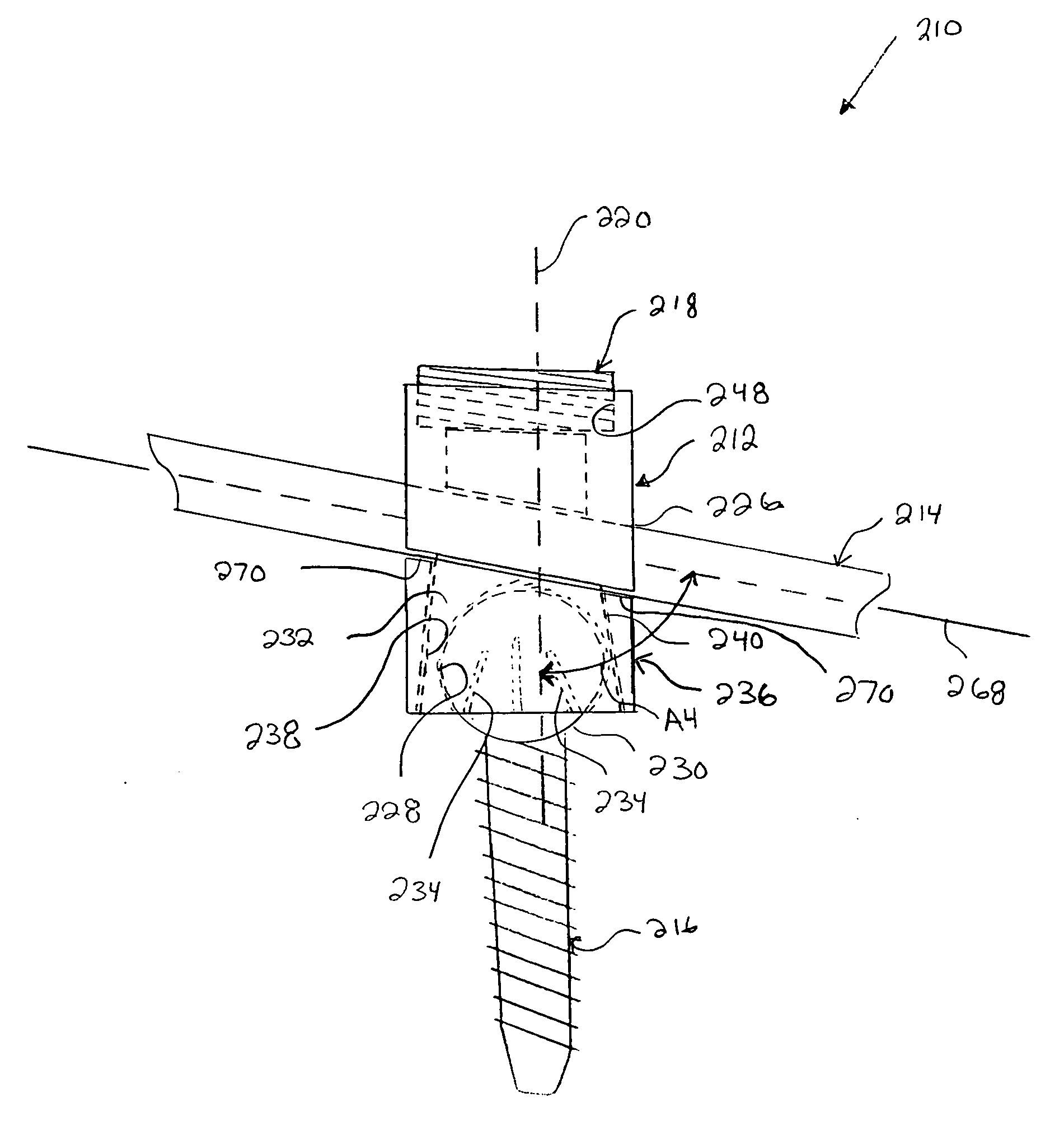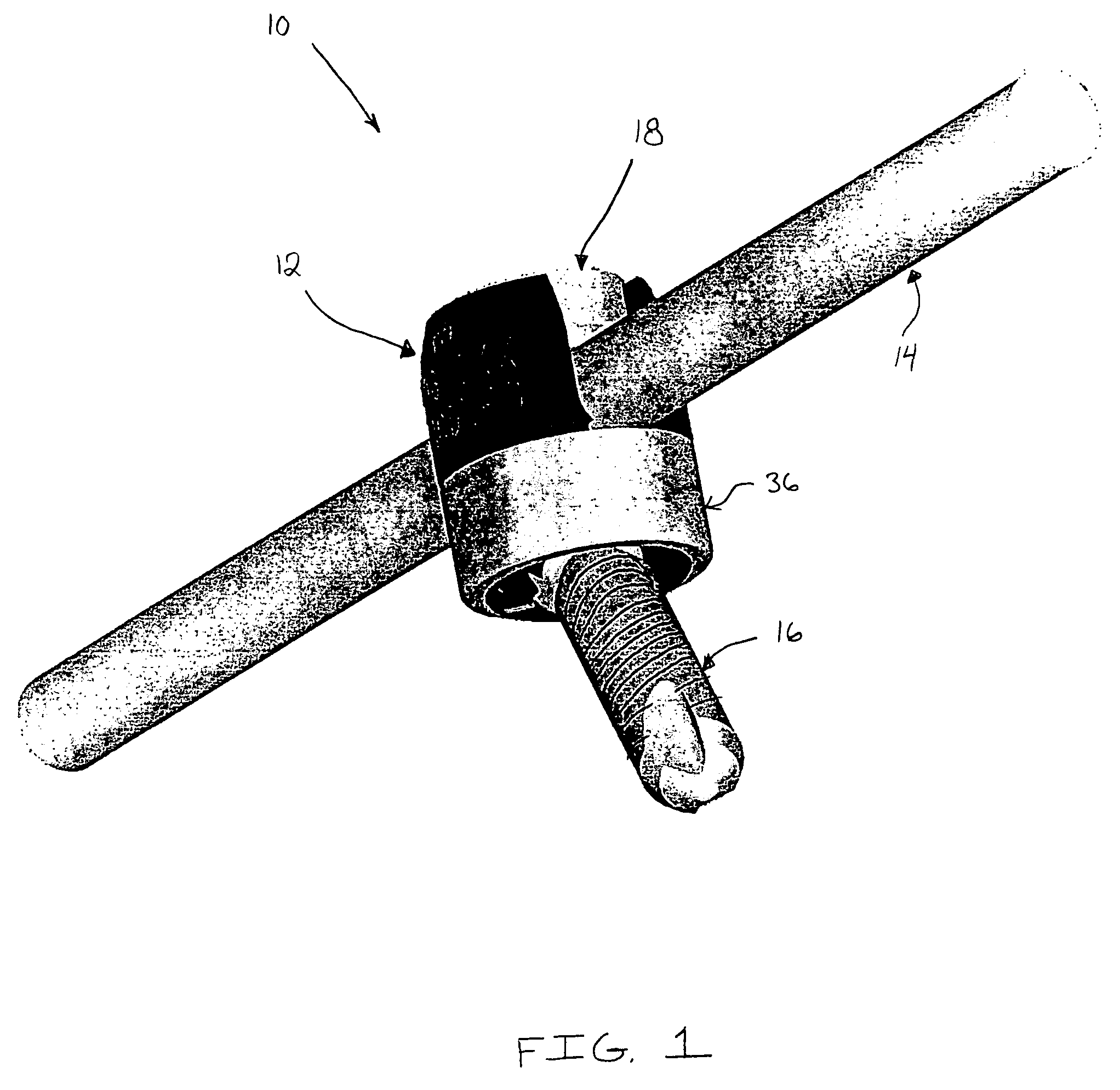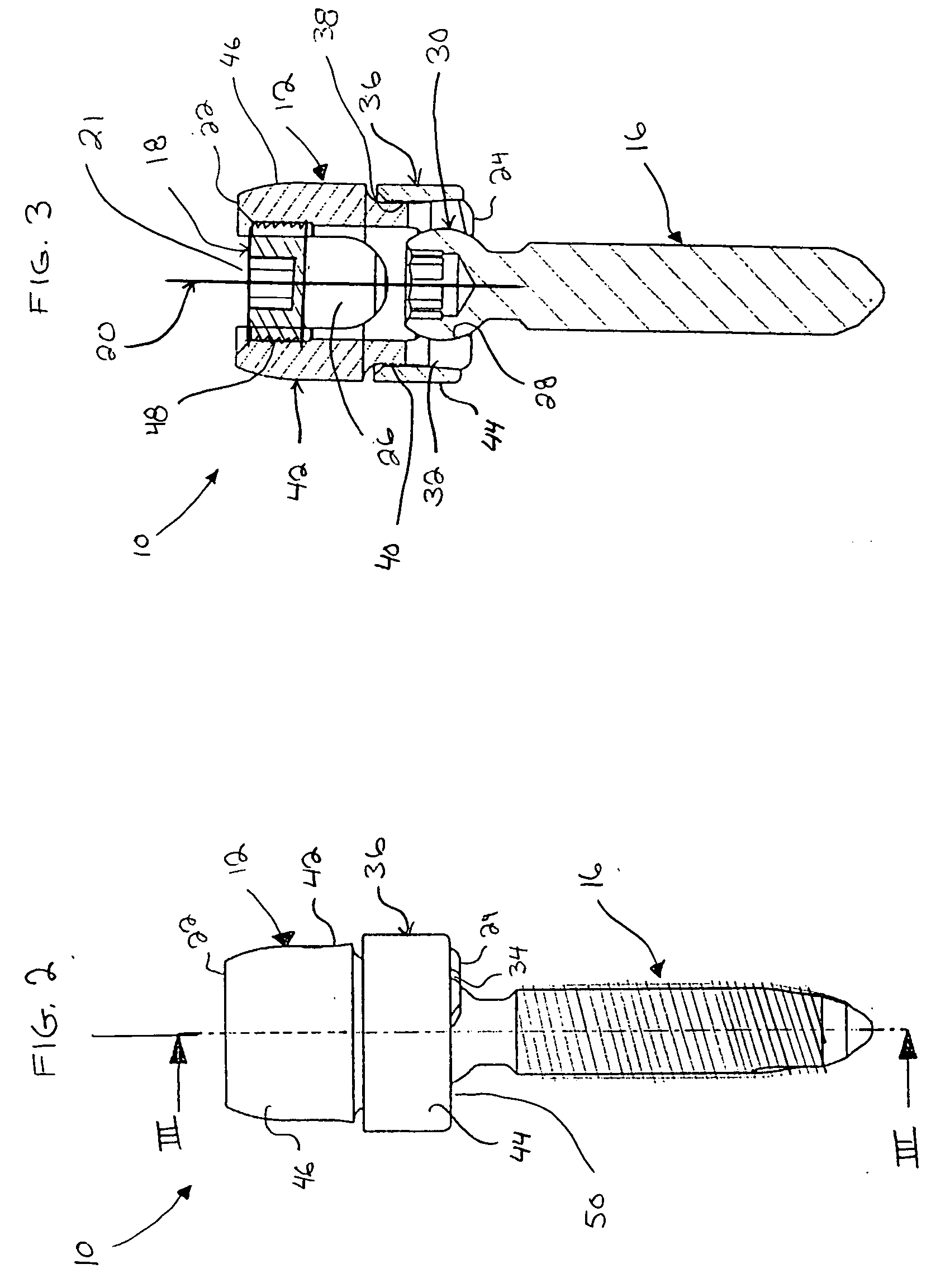Polyaxial bone anchor and method of spinal fixation
a bone anchor and polyaxial technology, applied in the field of bone anchors, can solve the problems of limited degree of angulation, the head of the screw or hook is often out of alignment with one another, and surgeons often encounter considerable difficulty in using this method, and achieve the effect of increasing the angulation of the anchor member
- Summary
- Abstract
- Description
- Claims
- Application Information
AI Technical Summary
Problems solved by technology
Method used
Image
Examples
Embodiment Construction
[0033] Referring to FIG. 1, a first illustrative embodiment of a polyaxial bone anchor according to the present invention is shown. Polyaxial bone anchor 10 generally includes a body 12 having a channel for receiving a spinal rod 14 or other device, an anchor member 16 attached to body 12 such that it can polyaxially rotate with respect to body 12, and a fastener 18 for securing the spinal rod 14 to body 12. Fastener 18 may also fix the angular position of anchor member 16 with respect to body 12. One or more polyaxial bone anchors 10 may be attached to the vertebrae via anchor member 16 (shown as a bone screw) and positioned along the spinal rod 14, or other device, to correctly align the spine or treat other spinal disorders.
[0034] Referring to FIGS. 2 and 3, side and cross-sectional views of polyaxial bone anchor 10 are shown, respectively. As shown, body 12 may comprise a generally cylindrical member defining a first axis 20, an upper bounding edge 22 and a lower bounding edge ...
PUM
 Login to View More
Login to View More Abstract
Description
Claims
Application Information
 Login to View More
Login to View More - R&D
- Intellectual Property
- Life Sciences
- Materials
- Tech Scout
- Unparalleled Data Quality
- Higher Quality Content
- 60% Fewer Hallucinations
Browse by: Latest US Patents, China's latest patents, Technical Efficacy Thesaurus, Application Domain, Technology Topic, Popular Technical Reports.
© 2025 PatSnap. All rights reserved.Legal|Privacy policy|Modern Slavery Act Transparency Statement|Sitemap|About US| Contact US: help@patsnap.com



